In addition to Key Results, Vistaly now has first-class support for KPIs & KPI Trees. Before diving into the details, here is a quick overview of differences and when you would reach for one over another.
Key Results
Key results are the quantitative component in the OKR goal setting and achieving method. They are used to create focus on a specific outcome and help quantify actions taken.
They are a timebound instrument for going from where you are today to an aspirational target in the future.
OKR – Key Result Example

When to reach for a Key Result
- When there is a known outcome to achieve.
- When there is a need to create focus around a specific initiative.
KPIs
Key Performance Indicators (KPIs) are a set of critical metrics that summarize performance. They create a quantifiable baseline to help focus attention and improve decision-making.
KPI Example
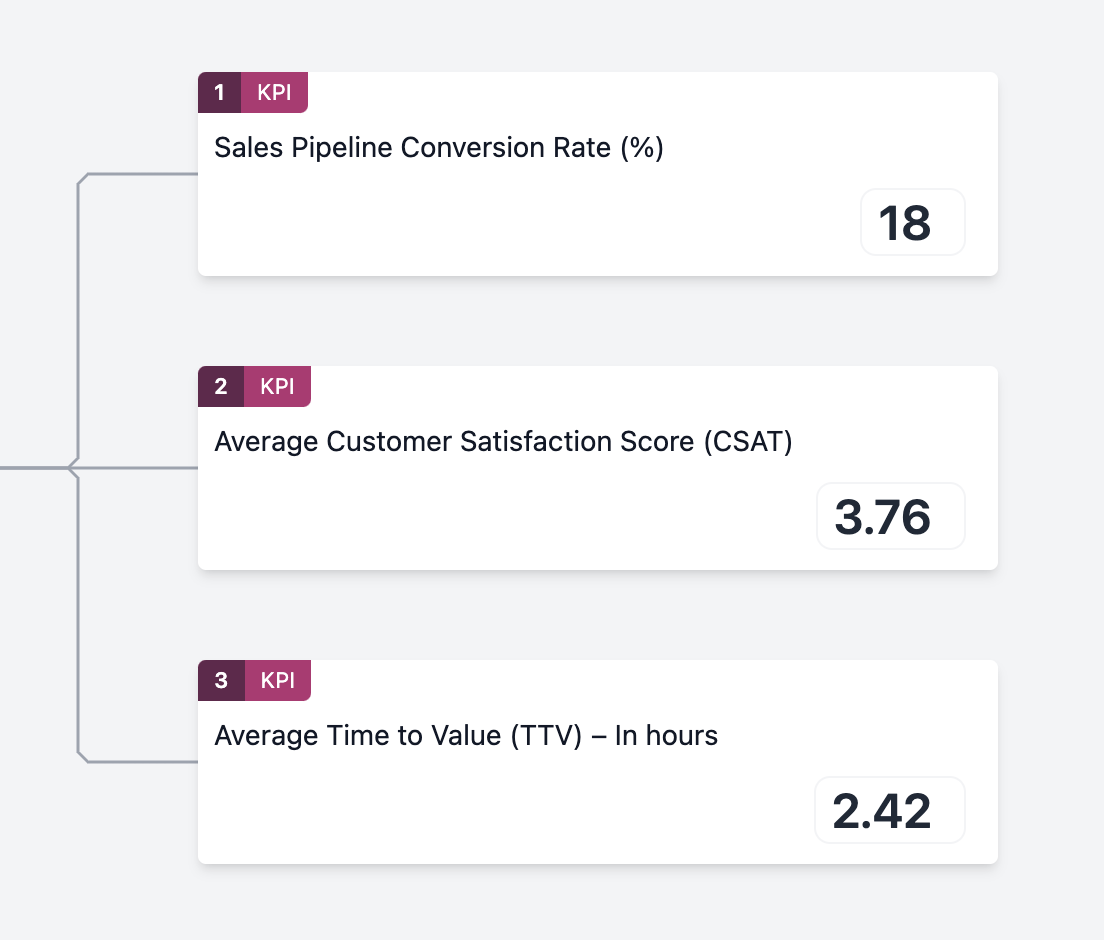
When to reach for a KPI
- When monitoring essential metrics over time is important.
- When you want to elevate the importance of a particular aspect of a system/process.
- When there's a need to ensure compliance (e.g. regulated industries)
KPI Trees
KPI Trees provide structure to KPIs by helping visualize how individual KPIs correlate.
KPI Tree Example
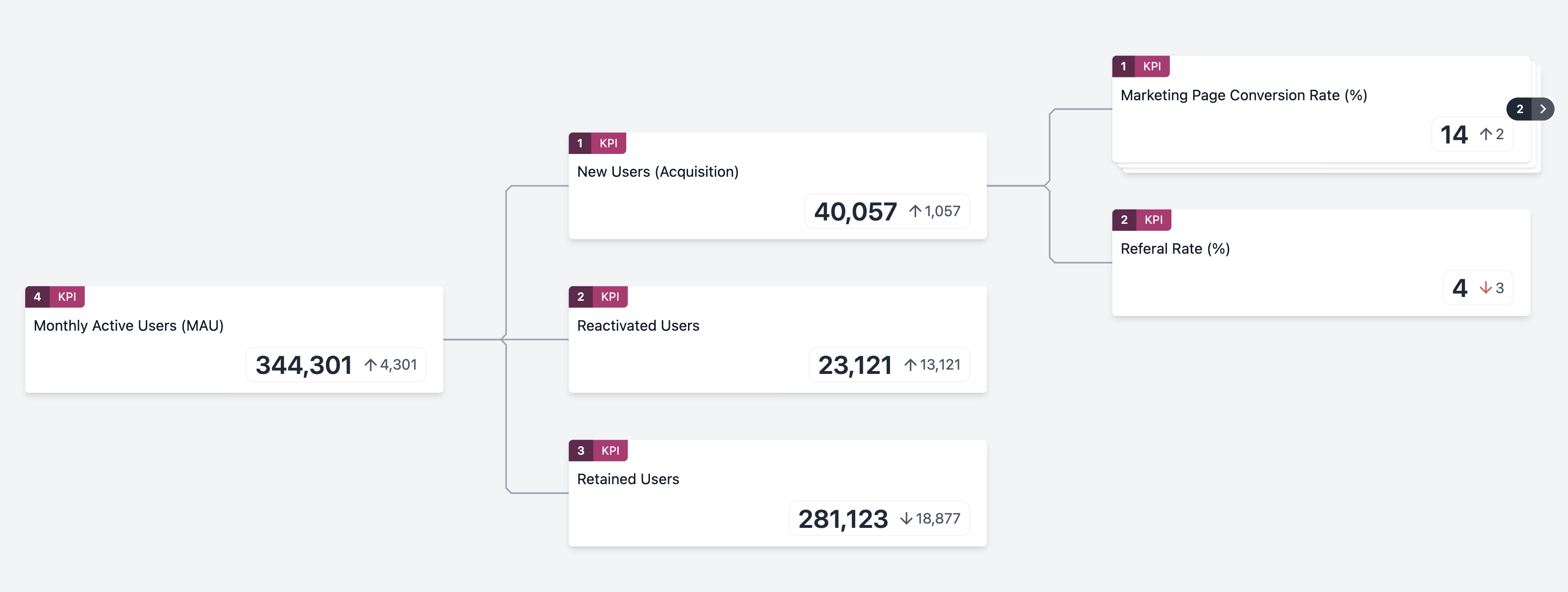
When to reach for a KPI Tree
- When there's a desire to understand how essential metrics influence one another.
- When visualizing how change impacts a complex system.
Business/Product Outcomes (Bonus)
If you're familiar with Continuous Discovery Habits [1], outcomes are used similarly to Key Results in OKRs but clearly distinguish between business outcomes and product outcomes.
The difference between the two has to do with the level of influence. A product team should be able to influence a product outcome on its own, and it may take more buy-in from the business to influence a business outcome.
Outside of influence, feedback cycles are another common benefit of distinguishing between business and product outcomes. Product outcomes tend to be leading indicators of what's working, while business ones are lagging.
For example, suppose the business outcome is "increase revenue in the coming year by x%", and the product outcome is "improve customer engagement with a particular workflow" – one will take much more time to influence than the other.
OKR & Business/Product Outcome Example

KPIs in Vistaly
Now onto modeling KPIs & KPI Trees in Vistaly.
To create a new KPI, hover over the red plus icon on an objective, KPI, or Key Result card, and select the KPI option.
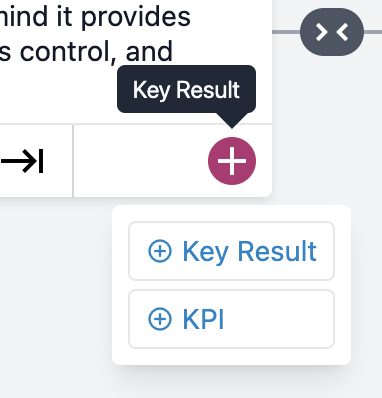
Similar to Key Results, KPIs have a metric field. When editing the metric field, there are optional thresholds to help identify at a glance how the KPI is performing and if attention is needed. The "lower threshold", "target", and "upper threshold" values are optional.
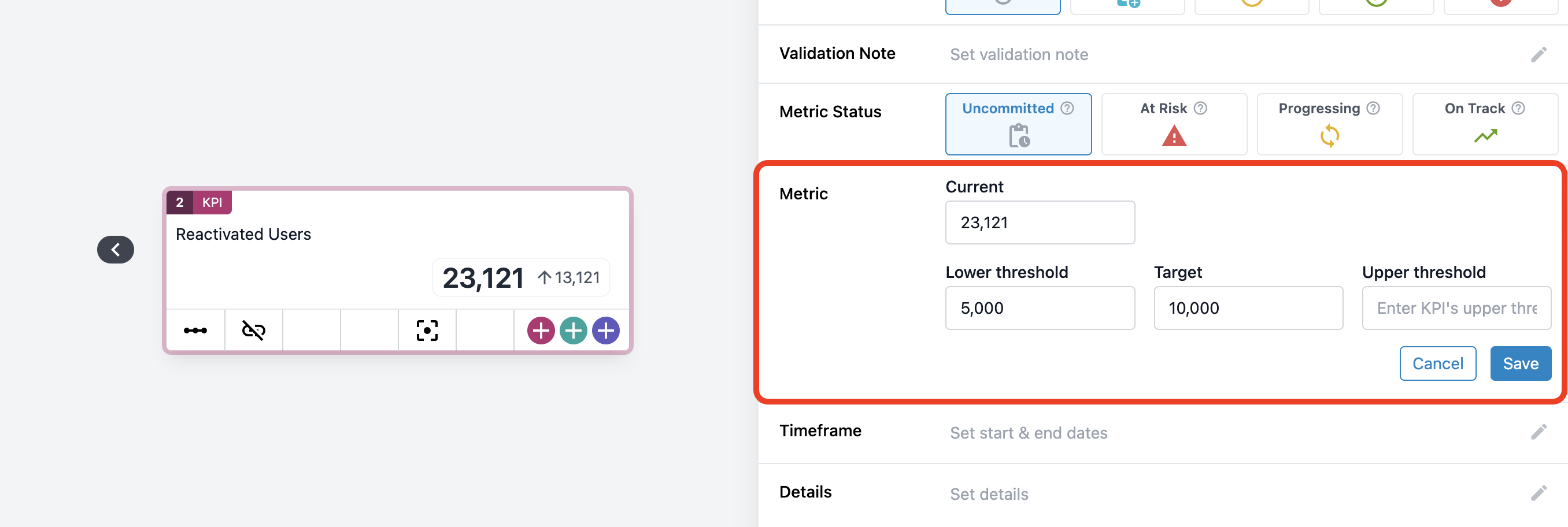
A red arrow will display next to the current value when the current value falls outside a threshold. In addition, if an optional target is provided, a number will display next to the arrow indicating how far the current value is from the target.

Key Result Changes (Deprecated Metric Name)
Many teams ended up duplicating the custom metric name in the card title. To remove unnecessary fields, we encourage teams to copy this name into the title of each card and select "Remove metric name" from the side panel to remove the deprecated value.
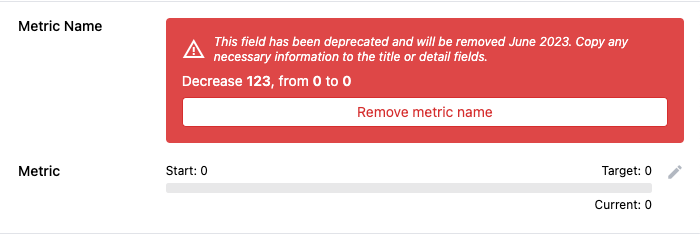
See the new warning menu in the top toolbar to find any Key Results still using the legacy field.
If this icon is not displayed in your menu, no actions are required.
